What is Doji Candlestick? The Types of Dojis, Real Life examples along with relevance, limitations, and application of Doji candlesticks to identify trend
Doji candlestick can help traders, and even investors, to a large extent, can help identify trend reversal points on chart patterns.
So let us know everything one needs to know about the Doji candlestick when trading and investing in the Market.
What is Doji Candlestick?
Doji candlestick is formed when you have open and close very close to each other, and the candlestick has a long shadow either on the upside or downside.
If you are not sure about reading candlesticks, please check out my article to understanding the candlestick here.
The above image has a Doji candlestick.
In Japanese, the “Doji” means a mistake. It is referring to the breaking of essential support or resistance level in the chart pattern, which can often be a mistake. When we look at the real examples, you will see how any trader can make a mistake of misreading it.
The Types of Doji Candlesticks
There are predominantly five types of Doji candlesticks. Depending on where is the open/close, a Doji is described, as usual, gravestone, long-legged, dragonfly, or 4 price Doji.
1. Normal Doji
The first and the most common form of Doji candlestick is the normal Doji.
It is very close to a plus sign and has open and close very close to each other. Moreover, the upper body and the lower body are also of the same size.
Ideally, the normal Doji looks like this.
2. Long-legged Doji
When either the upper shadow or the lower shadow of the candlestick is more significant, the normal Doji becomes a long-legged Doji candle.
The Long-legged Doji looks like
In the above image, the shadow on the lower side has been marked longer, but even the upper shadow can be even longer, and it will be termed as long-legged Doji.
3. Gravestone Doji
When the open and close are very close to low, and there is a large shadow of the upper body termed as gravestone Doji candle.
Typically the graveyard Doji candle appears at the top of the uptrend.
After the open, the price action moves higher, but the upper price range is rejected, and there is a sharp pressure. The close is very close to the open.
Gravestone Doji is one of the few patterns that indicate the formation of the new top in the up-trending price. Moreover, it is the first signal of the bearish trend.
4. Dragonfly Doji
When the open and close are very close to the high, and there is a large shadow of the lower body termed as gravestone Doji candle.
Similar to Gravestone Doji, the Dragonfly Doji also indicates the end of the bear trend and start of a bull trend.
Usually, the graveyard Doji candle appears at the bottom of a downtrend.
After the open, the price action moves lower and often below significant support levels.
However, the lower price is rejected, and there is a sharp surge in price. Typically, the price range is very lucrative for the investors who provide the first support level, and then the short covering, as well as the formation of the bottom, takes place, and the price starts surging.
Moreover, it is the first signal of the uptrend.
5. 4-Priced Doji
The last and final type of Doji is the 4-priced Doji was open, high low, and close are all very close to each other.
It is a unique kind of pattern that signifies very low market volatility. Traders, as well as investors, are undecided and aren’t ready to take up any position in the Market.
The 4-priced Doji is a sign of indecision in the Market with a shallow level of market participation.
Real Life Doji Examples
Let us now understand Doji with some of the examples. I am using TradingView charts for all the examples below.
Amara Raja Batteries
The first example is in the daily charts of Amara Raja Batteries.
The Normal Doji candlestick is marked in blue.
Dragonfly Doji candlesticks are marked in green. One can see in each of the dragonfly candlesticks; there is a mini downtrend that reverses after the Doji candle for the next uptrend.
Similarly, the gravestone Doji candlesticks are marked in red and labeled accordingly.
Did you notice that after each of the formation of gravestone Doji candlesticks, the mini uptrend in the prior candlestick reverses for a mini correction in the stock price?
Motherson Sumi
We see similar formations of the dragonfly as well as gravestone Doji candlestick in the charts of Motherson Sumi Systems.
The mini-trend reversal from each of those Doji candlesticks is visible in the daily charts of Motherson Sumi.
Moreover, because Motherson Sumi is a highly traded stock and so the formation of any chart pattern is much better in stocks with high trading volume.
What is the relevance of Doji Candlestick?
The essential criteria to trade successfully in the Market is to be able to identify the minor trend within a significant trend. Moreover, one should be able to identify the trend very early to be able to take the position.
Doji candlesticks help in identifying the minor trend almost instantly and almost on the same trading day.
Let me explain what I mean by the same trading day.
Let’s assume some stock is in a minor downtrend. The stock has fallen from the levels of ₹110 to ₹101.
The stock opens at ₹100 and continues the downtrend to make a low of ₹95 intraday.
However, from the lows, the stock starts recovering. In the closing hours, the share is very close to ₹100.
One can assume the close in the stock will be around the open price, and the pattern that forms for the daily chart will be a dragonfly pattern.
Opens at ₹100, makes a high of ₹101 and a low of ₹95 and a high probability of close again close to ₹100.
So one can opt to trade with a bullish view on the stock on the following day.
So one can infer the daily trend reversal on the same day and even before the market close.
Similarly, when the stock is in an uptrend but if the higher levels are rejected and if the stock is not able to sustain above the resistance levels with a formation of gravestone Doji candle can mean a correction in the stock in the near term.
Limitations of Doji
A Doji is common, and so it often isn’t very reliable to spot a trend reversal on its own.
Moreover, there are Doji candlesticks formed on the wrong side of things. It means where you expect a dragonfly, but one finds a gravestone and vice versa.
The use of Doji in isolation can infer very little information. One has to take into account other lead indicators, preferably the support and the resistance levels.
The rejection of a critical resistance level with a formation of Gravestone Doji candlestick is ideal.
Similarly, the breach of critical support level with a formation of dragonfly Doji candlestick is ideal.
How to Apply Doji Candlestick pattern in Market
The best application of Doji candlestick is on the daily charts.
However, in some cases, one can’t make a decision based on a single Doji candlestick. So then one can also find double Doji candlesticks one after the other.
Double Doji can give more conviction in trading with even a more reliable trend reversal move that may unfold.
In the above charts, the second gravestone marked Doji is a double Doji where you can see the candlestick before the one I have labeled is also a gravestone.
Final Thoughts
Doji is one of those patterns that can help identify the trend reversal very early.
However, because it is an early indicator, there are chances of it failing as well.
So traders have to combine the support and resistance as well as other indicators to confirm the probability of a trend reversal indication from the formation of Doji.


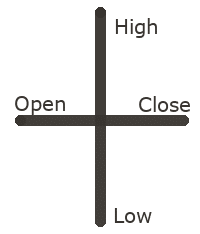
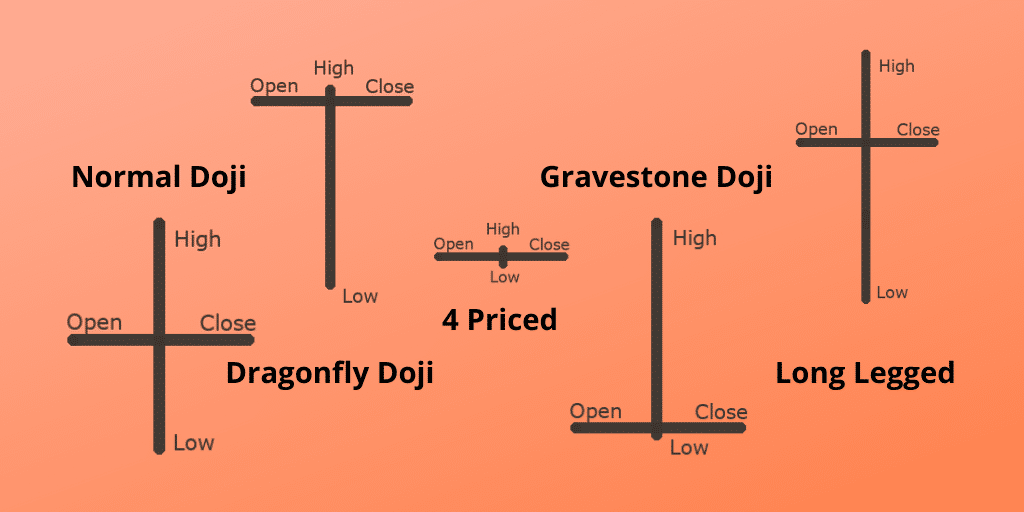
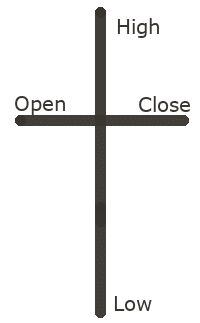



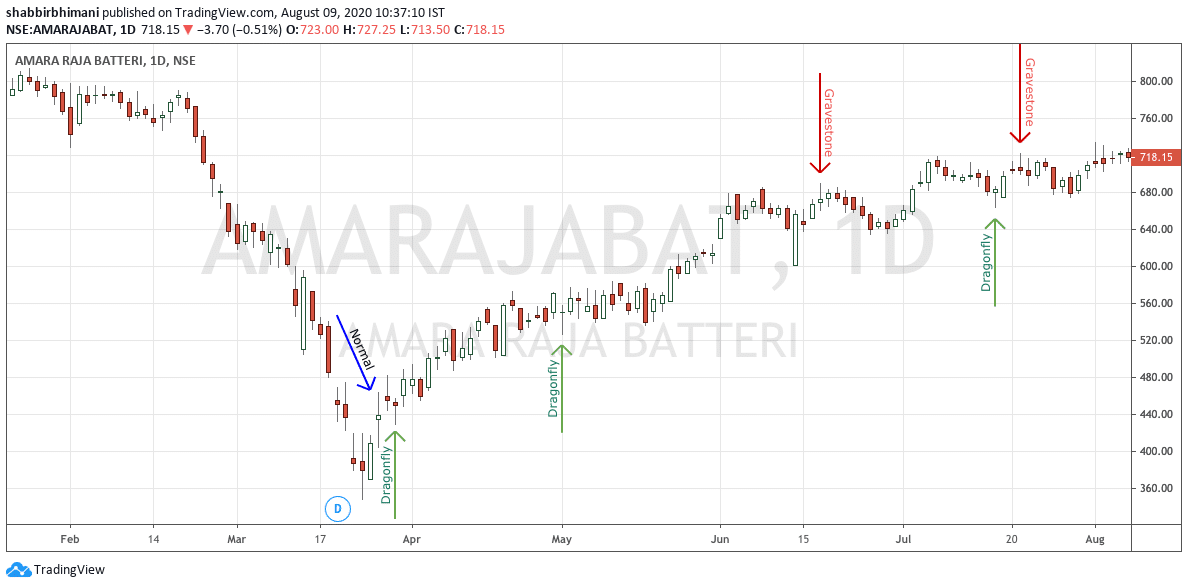
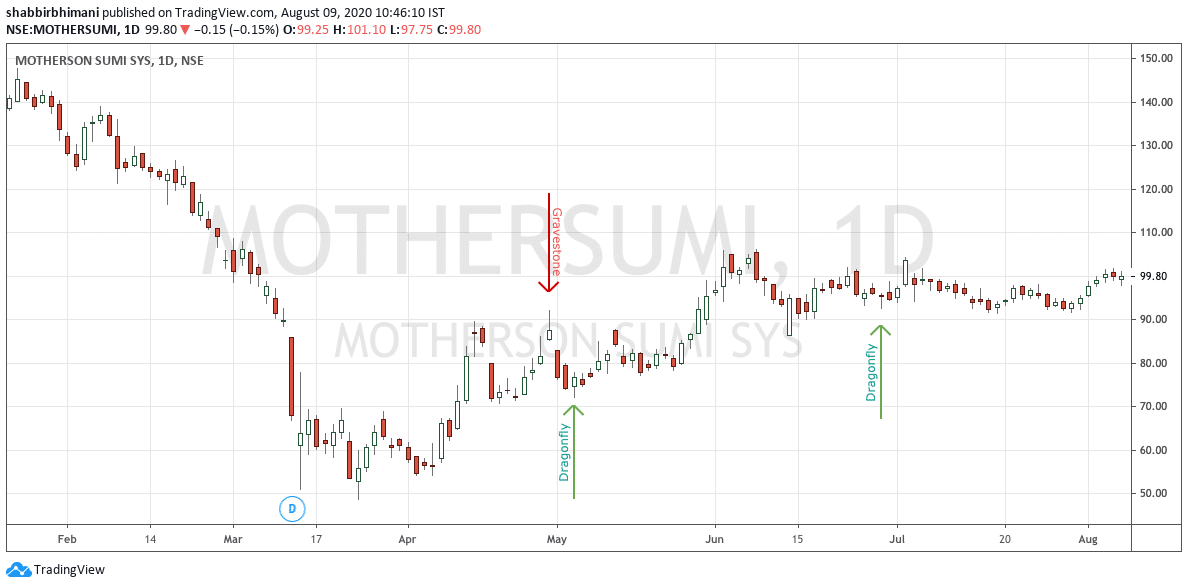


Leave a Reply